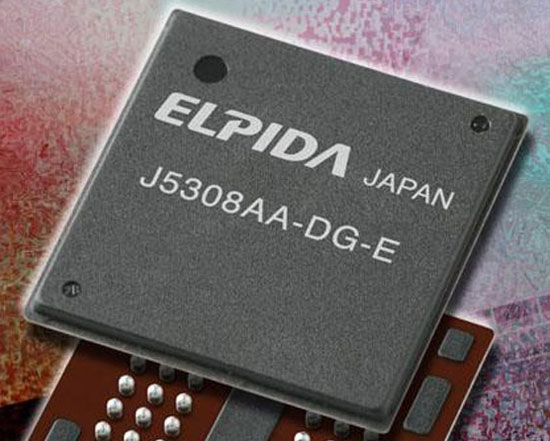DRAM Prices Are Hardly Changing These Days
DRAM has been the poster child of rapidly fluctuating market prices for decades. DRAM vendors could get insanely rich one month and fall near bankruptcy the next. Not so right now.

Prices have entered a phase of unusual stability that has been caused by the bankruptcy of the third-largest DRAM maker, Elpida, and speculation what will happen to the company.
According to IHS, spot market prices for 2 Gb DDR3 DRAM fluctuated by 17 percent in the two weeks before the bankruptcy was announced. 12 weeks later, prices changed by only 0.7 percent. Also, prices are substantially higher. On IHS’ pricing index scale, DDR3 is currently listed at 243, a number that relates to the 1000 score when the index was launched in 2002.
“With things still very much up in the air on how events will unfold, industry participants seem to be waiting for some indication of what the resulting industry structure will be like after an Elpida takeover is finalized,” said Dee Nguyen, memory analyst at IHS. “As a result, the current pricing environment appears to reflect this mood with the DRAM market eerily quiet, accompanied by visibly less pricing volatility atypical of the industry. Clearly then, a direct correlation exists between decreased DRAM pricing volatility and Elpida’s announcement given that the current period of flat DRAM pricing occurred right after the bankruptcy notice. The big question also remains whether normal volatility will return once some clarity emerges on the future of Elpida.”
Neither bulk buyers nor the end-user is likely to get a particularly good deal on DRAM these days. If there is no urgent need to buy memory at this time, it may be a good idea to wait just like the rest of the industry. While there is a reasonable chance that the DRAM industry will learn from its weakness in the past and remain on a road of stable pricing, there is also a good chance that more volatility and, as a result, favorable buying opportunities, will return.
Get Tom's Hardware's best news and in-depth reviews, straight to your inbox.
-
dextermat I think dram is at a descent price (if you compare % of full computer price)Reply
But I think it's too bad you have so many useless specs to confuse normal consumer, where specs won't make much difference unless you have high end parts and overclock. (frequency, timing and voltage) -
The prices on 8gb modules of ddr3 have fallen, and 4gb modules have been at very reasonable pricesReply
im happy. getting 8 or 16gb of ram into a system isnt expensive.
i remember when 1gb of ram was impressive
-
whiteodian When I built my computer two years ago, I paid over $200 for 4x2GB. you can get a comparable kit for $60 or $49 for 2x4GB. DRAM prices are great right now. They have been for about a year (I think). I hope the prices stay as good as they are.Reply -
mouse24 Considering a ram manufacturer went bankrupt and prices are more or less the same I'd say we are pretty well off.Reply -
DRosencraft It always struck me as a little insane that memory prices have always fluctuated so drastically. Most industries can't survive such instability, so it makes sense that someone like and Elpidia would fail (big enough to be well known and regarded, but not big enough to weather so many price storms). Once DDR4 starts becoming mainstream in a couple years, it's likely that there will be some more volatility. Even so, I imagine that time will show that DDR3 is right around its natural bottom.Reply -
I kind of regretted buying 8GB of DDR3 memory back in September. Should have bought several 2TB hard drives before the Thailand floods instead.Reply
-
alidan i wish i could get more memory... still on ddr2, my motherboard supports 16gb, but... 4gb stick of ddr2 is expensive. and yes i have a reall need for 16gb.Reply -
supall At least with DRAM, we can find quality stuff. The HDD front on the other hand is completely backwards - lowering quality, high prices, and only 2 main competitors.Reply